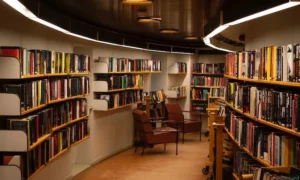The timeless allure of sarees has transcended generations, and within this rich tapestry of traditional attire, embroidered sarees stand as exquisite masterpieces. These garments not only showcase intricate craftsmanship but also narrate stories of cultural heritage and artistry. In this exploration, let’s unravel the enchanting world of embroidered sarees, delving into their historical significance, diverse embroidery styles, and the modern resurgence that keeps this art form alive.

I. The Legacy of Embroidery in Sarees: A Historical Overview
Embroidery has been an integral part of textile traditions across cultures, and in the context of sarees, its roots can be traced back through centuries.
- Ancient Beginnings: The art of adorning fabrics with needle and thread dates back to ancient civilizations. In India, this craft was embraced across regions, each area developing its unique embroidery styles.
- Sarees as Canvases: Sarees, being a canvas for artistic expression, became a natural choice for intricate embroidery. Royal patronage and skilled artisans played pivotal roles in elevating sarees into symbols of opulence and refinement.
II. Diverse Embroidery Styles: A Kaleidoscope of Techniques
India, with its diverse cultural landscape, boasts a myriad of embroidery styles, each reflecting the distinct heritage of its region.
- Zardozi: Originating from Persia, zardozi involves intricate metal embroidery using gold and silver threads. This opulent style adds a regal touch to sarees, making them perfect for grand occasions.
- Kantha Embroidery: Hailing from West Bengal, Kantha embroidery involves simple, running stitches that create beautiful motifs. Often narrating stories, Kantha sarees are a celebration of simplicity and elegance.
- Chikankari: A specialty of Lucknow, Chikankari involves delicate white threadwork on lightweight fabrics. The sheer beauty of Chikankari sarees lies in their ethereal charm and intricate patterns.
- Bandhani: Originating from Gujarat and Rajasthan, Bandhani involves tying and dyeing the fabric to create vibrant, dotted patterns. Bandhani sarees are a celebration of colors and craftsmanship.
- Kasuti Embroidery: Native to Karnataka, Kasuti involves intricate patterns of stitches that form detailed motifs. Kasuti sarees are known for their geometric precision and cultural richness.
III. Modern Resurgence: Revitalizing Tradition for Contemporary Tastes
In recent times, there has been a revival of interest in traditional crafts, leading to a modern reinterpretation of embroidered sarees.
- Contemporary Designs: Designers are experimenting with new color palettes, innovative motifs, and fusion styles, breathing fresh life into traditional embroidery techniques.
- Sustainable Practices: The revival of handloom and handcrafted sarees aligns with a global shift towards sustainability. Consumers are increasingly valuing the authenticity and craftsmanship embedded in embroidered sarees.
- Global Appeal: Embroidered sarees have transcended borders, gaining popularity on international runways and among fashion enthusiasts worldwide. The fusion of traditional techniques with global trends has broadened the appeal of these sarees.
IV. Celebrating Occasions: Embroidered Sarees in Different Settings
- Weddings and Festivals: Embroidered sarees, with their intricate details and luxurious appeal, are often the preferred choice for weddings and festive occasions. They effortlessly capture the grandeur of such events.
- Casual Elegance: Lighter embroidered sarees are embraced for more casual settings, offering a perfect blend of comfort and elegance. They are suitable for daytime events and social gatherings.
**V. Caring for Embroidered Sarees: Tips








































